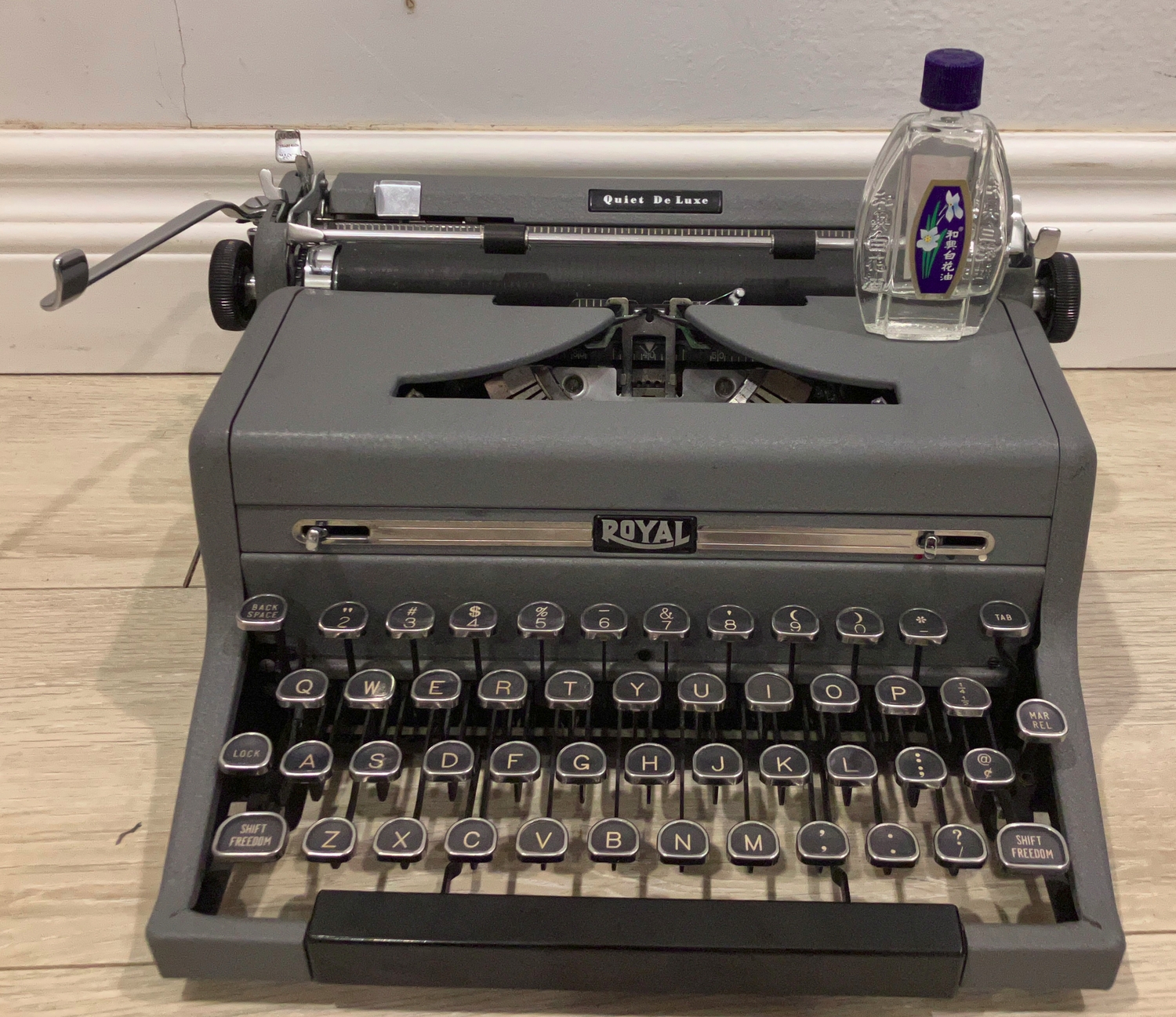Introduction
There is a medicinal ointment popular in Hong Kong called 白花油 (“White Flower Oil”) that produces a cool, minty feeling when rubbed on the skin and is used as a pain and itch reliever. (A similar product called 风油精 (“Wind Oil Essence”) is used in Mainland China.) Interestingly, one of its main ingredients, which makes up 40% of it, is methyl salicylate, a chemical often used to soften rubber.
The specific use case I had in mind was restoring some grip to the time-stiffened rubber feet of an old typewriter. They had deteriorated to the point where the force of the heavy carriage stopping after advancing one space was sufficient to move the typewriter across my smooth table by a millimeter or two, which added up to produce a noticeable position shift during typing.
Methyl salicylate is most commonly combined in a 1:3 ratio with isopropyl alcohol (presumably as a nonpolar solvent to dilute the expensive methyl salicylate) and used to soak rubber parts. Additionally, people online suggest a variety of methods to soften old rubber, like specialized rubber conditioner, silicone lubricant, brake fluid, various organic solvents, WD-40, and heat. I previously tried rubbing on some vegetable oil, but it didn’t work at all and made the feet even more slick. I decided to use White Flower Oil because it seemed the most benign and unlikely to destroy the rubber, unlike heating and organic solvents. Also, the feet were attached using some very strange screws and I didn’t have the tool to remove them, so any treatment involving soaking was out.
Procedure
The White Flower Oil was applied using my finger on the bottom of each foot and allowed to soak in for a few minutes before more coats were added. Since it was only applied on the surface, there wasn’t much a change in the mechanical properties of each pad, though it did appear to get slightly sticky and “gummy” after some time. However, this was soon resolved by letting the excess White Flower Oil evaporate.
The result was a dramatic increase in grip on the table. Movement while typing was completely eliminated, though pressing the tab key (which advances the carriage by 4 spaces) did move the typewriter by about 1 mm.
UPDATE 2024-08-25:
A few days after the treatment, two of the feet, which were much stiffer to begin with (probably because they were oxidized), seemed to lose their tackiness and become hard again. Re-applying White Flower Oil simply caused them to get very sticky and fall apart at the surface. Taking inspiration from this article, which suggests using sodium hydroxide (a strong base) to remove oxidized rubber, I tried something similar by soaking the typewriter feet in sodium carbonate (a less-strong base), resting them on paper towels soaked in sodium carbonate solution overnight. This caused a lot of “gunk” to come loose from the surface, which was wiped off. Re-treating the feet with White Flower Oil and letting it soak in, the feet no longer became as sticky.

If you want to try this for yourself, I would suggest the following course of action:
- If the rubber is very stiff and hard, soak it in sodium carbonate as described above. If it is still reasonably pliable but not grippy anymore, skip this step.
- Rub some White Flower Oil or equivalent onto the part you want to restore. Apply 3–4 coats, waiting for the liquid to fully soak into the rubber between coats.
- Wait half an hour to an hour after applying the last coat.
- Email me at me@jacobchiu.com and tell me how it went! What did you try? Did the rubber become sticky and fall apart? Was the grip restored?
UPDATE 2024-10-28:
The treatment has worn off somewhat after a few months, though the grip is still better than originally. Another application of White Flower Oil would probably fix it, at least for a while, though full immersion in methyl salicylate would be best.

